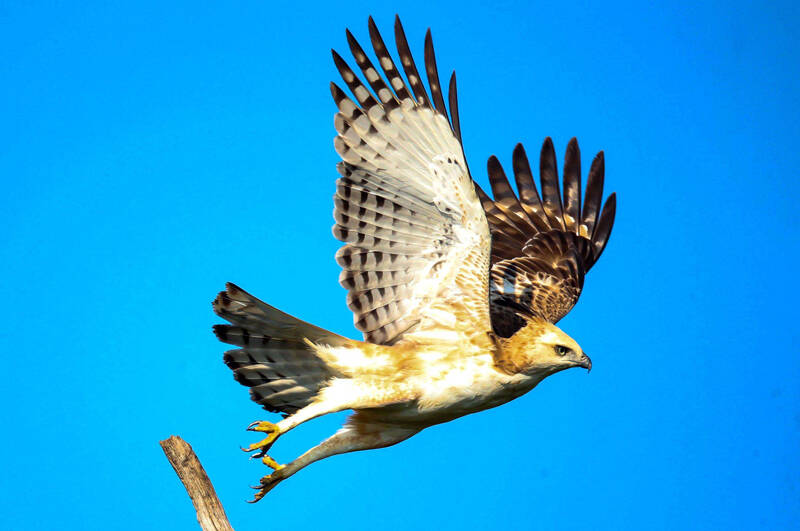Nisaetus cirrhatus
IUCN
LCBasic Information
Scientific classification
- name:Nisaetus cirrhatus
- Scientific Name:Nisaetus cirrhatus,Changeable Hawk-eagle, Crested Hawk-Eagle
- Outline:Raptor
- Family:Falconiformes Accipitridae Genus
Vital signs
- length:68-120cm
- Weight:680g
- lifetime:20-70years
Feature
Slender body, short crest on head
Distribution and Habitat
Distributed in Bangladesh, Brunei, Cambodia, India, Indonesia, Laos, Malaysia, Myanmar, Nepal, Philippines, Singapore, Sri Lanka, Thailand and Vietnam.
It mainly inhabits various forest types such as evergreen broad-leaved forests, deciduous broad-leaved forests and secondary forests. It especially likes to inhabit tall trees near forest edges and clearings. It also appears in sparse forests and in the sky near farmlands and mountain villages.
Appearance
The top of the head to the back of the neck is white, with brown drop-shaped spots on the feather tips, making the top of the head to the back of the neck appear black and white mottled, and the forehead is almost pure white. The occipital feathers are slightly extended to form the crown feathers. The upper back, shoulders and wing coverts are dark brown with a narrow light brown edge at the feather ends. The primary flight feathers are dark brown with a white base at the inner leaflet. The secondary and tertiary flight feathers are dark brown with faintly visible black. Brown horizontal spots with narrow light brown-white terminal edges. The feathers from the lower back to the upper tail coverts are sandy brown, and the long upper tail coverts are light brown and white, with light brown horizontal spots on the outer leaf. The tail is brown with 5-6 inconspicuous black horizontal spots. The eyes are gray at first, and the cheeks and ear feathers are light brown and white, decorated wit
Details
The Crested Hawk-Eagle is a large forest raptor with 5 subspecies.

The Crested Hawk-Eagle is a resident bird. It often moves alone and is alert. It likes to live on the highest dead branches at the top of the canopy of a large tree close to the edge of the forest and surrounded by open areas, so as to have a good view. When some small animals come to the open area, it suddenly swoops down at a very fast speed and grabs the animals with its sharp claws. The call is sharp and high, like "chi-chi-chi-chi-chi-", which starts short and gradually increases to a long scream.
The crested eagle mainly feeds on small and medium-sized birds such as pigeons, chickens, and peacocks, and also eats other small animals such as hares, mice, and lizards.
In India and Myanmar, the breeding season of the crested eagle is from January to April. Usually nests on tall trees. The nest is made of dead branches and is platform-shaped, slightly concave in the middle, with some green leaves inside. Usually one egg is laid. The egg is grayish white, without spots or only with sparse red spots at the blunt end. The size of the egg is 62-73.3 mm × 48.2-54 mm, with an average of 69.8 mm-59.1 mm.
Listed in the "IUCN Red List of Threatened Species" (IUCN) 2020 ver 3.1-Least Concern (LC).
Listed in Appendix I, Appendix II and Appendix III of the Convention on International Trade in Endangered Species of Wild Fauna and Flora (CITES) 2019 Edition Appendix II.
Listed in the second level of the "List of National Key Protected Wildlife in China".
Protect wild animals and eliminate game.
Maintaining ecological balance is everyone's responsibility!








